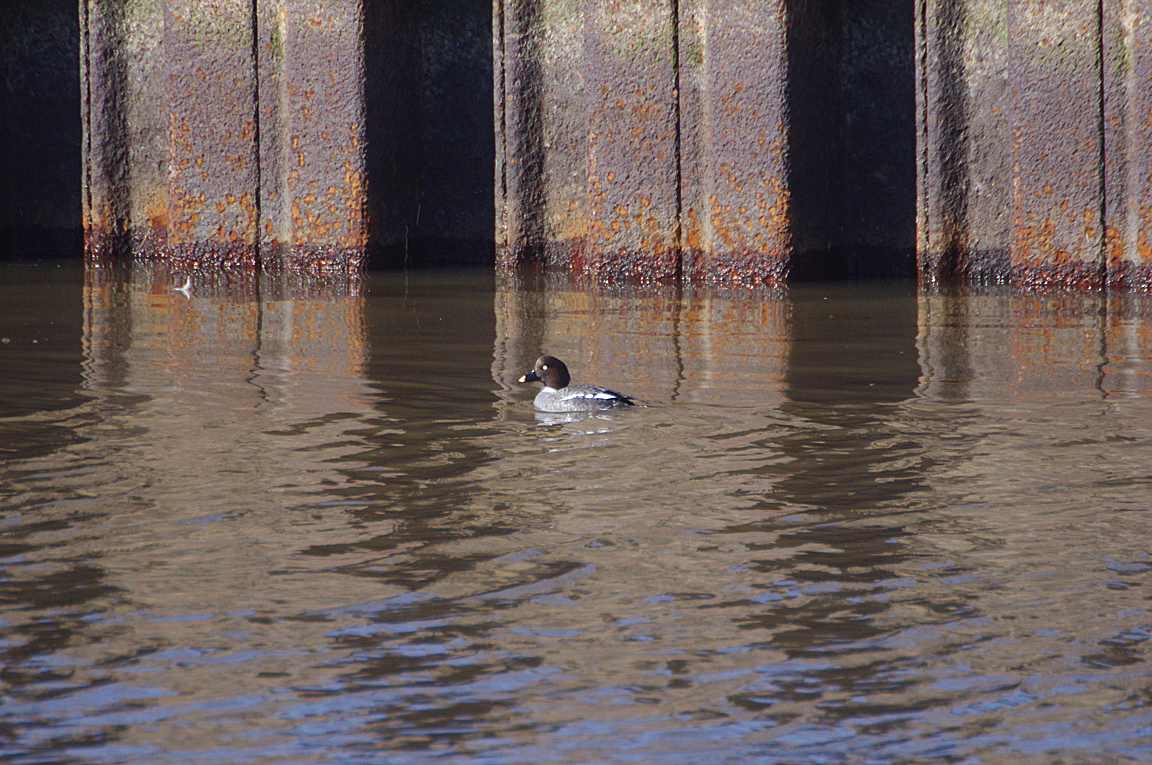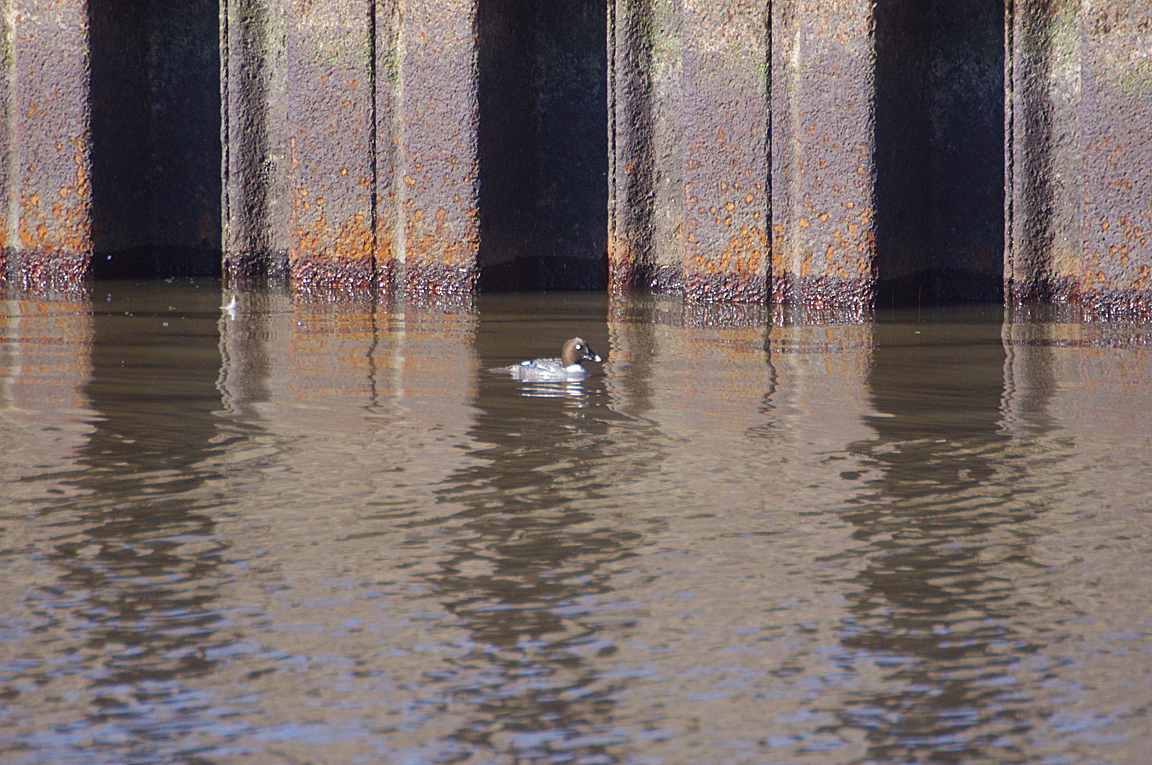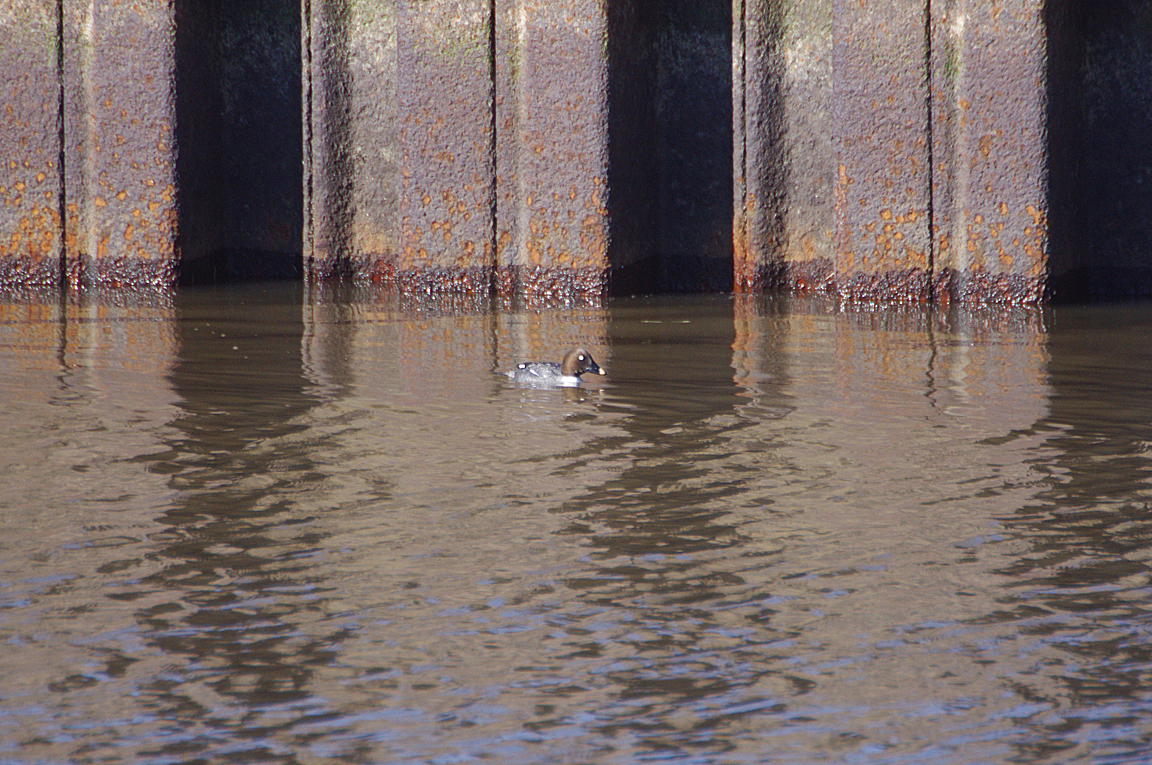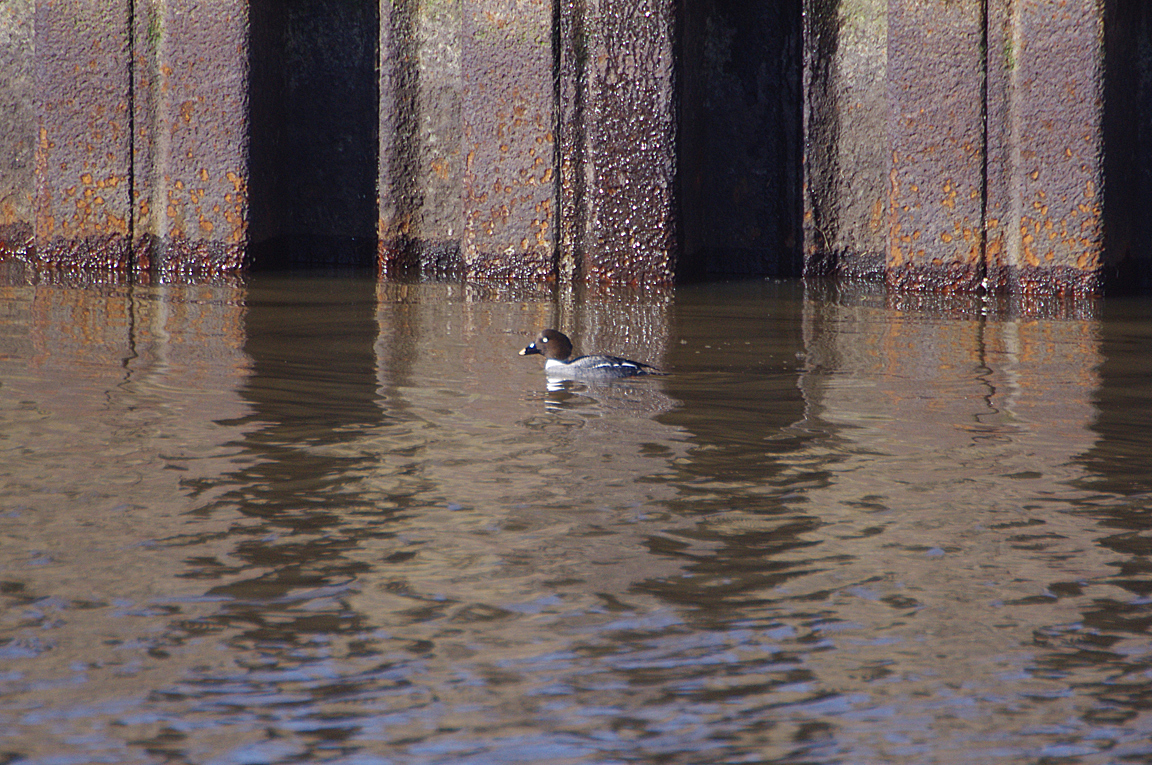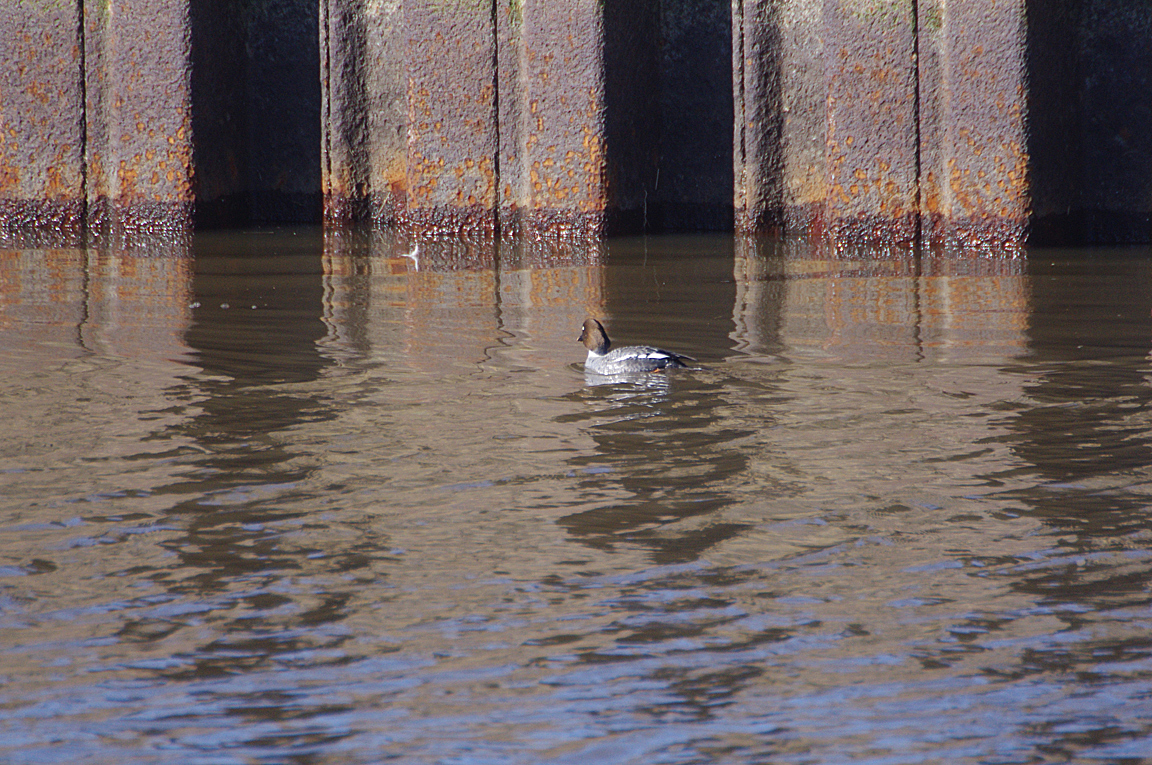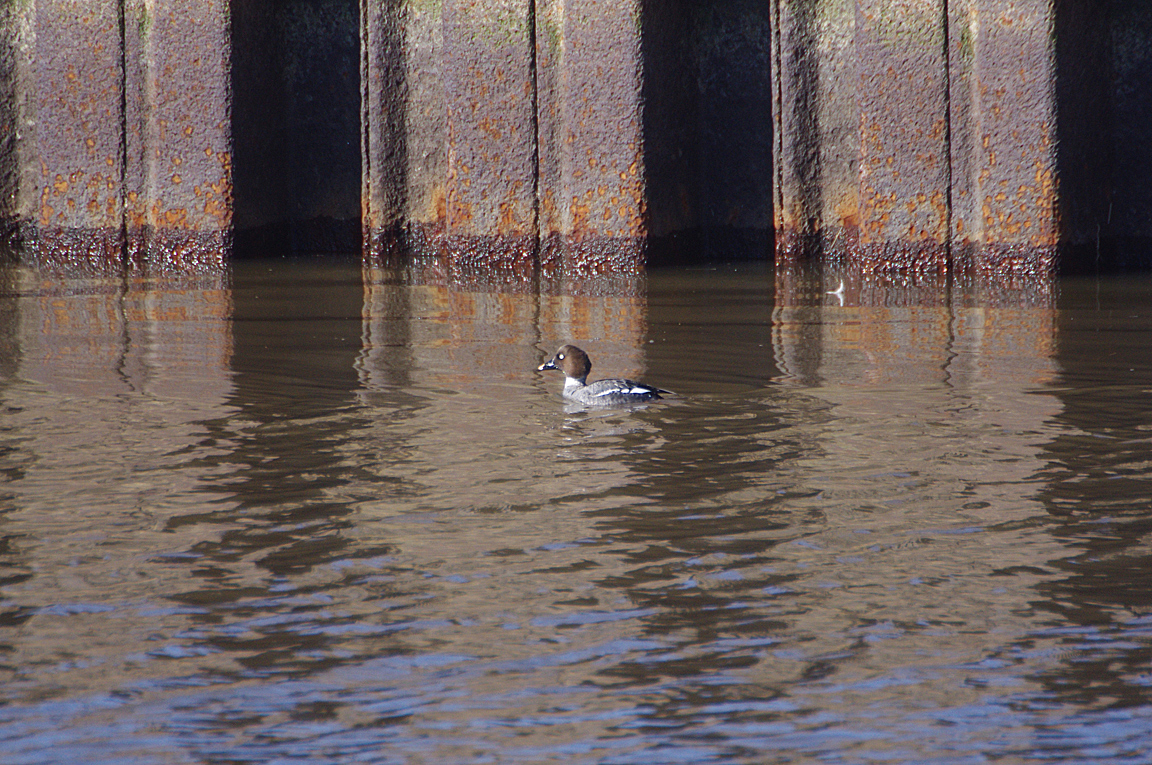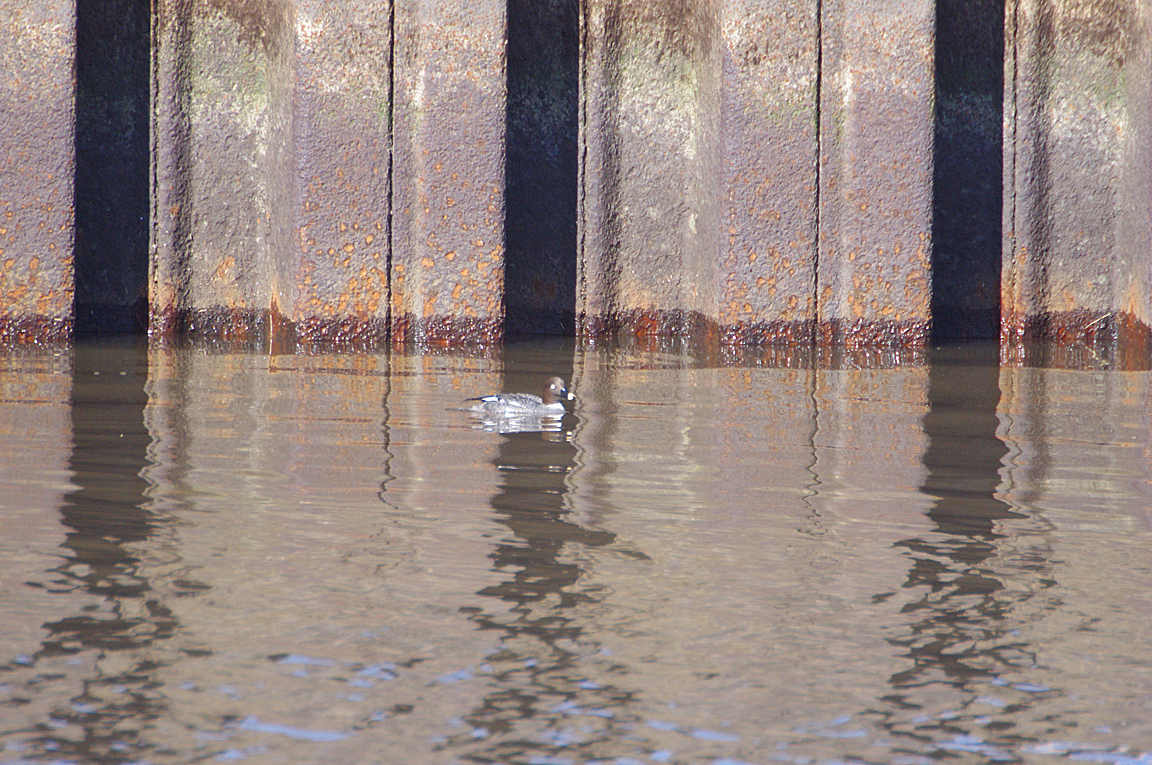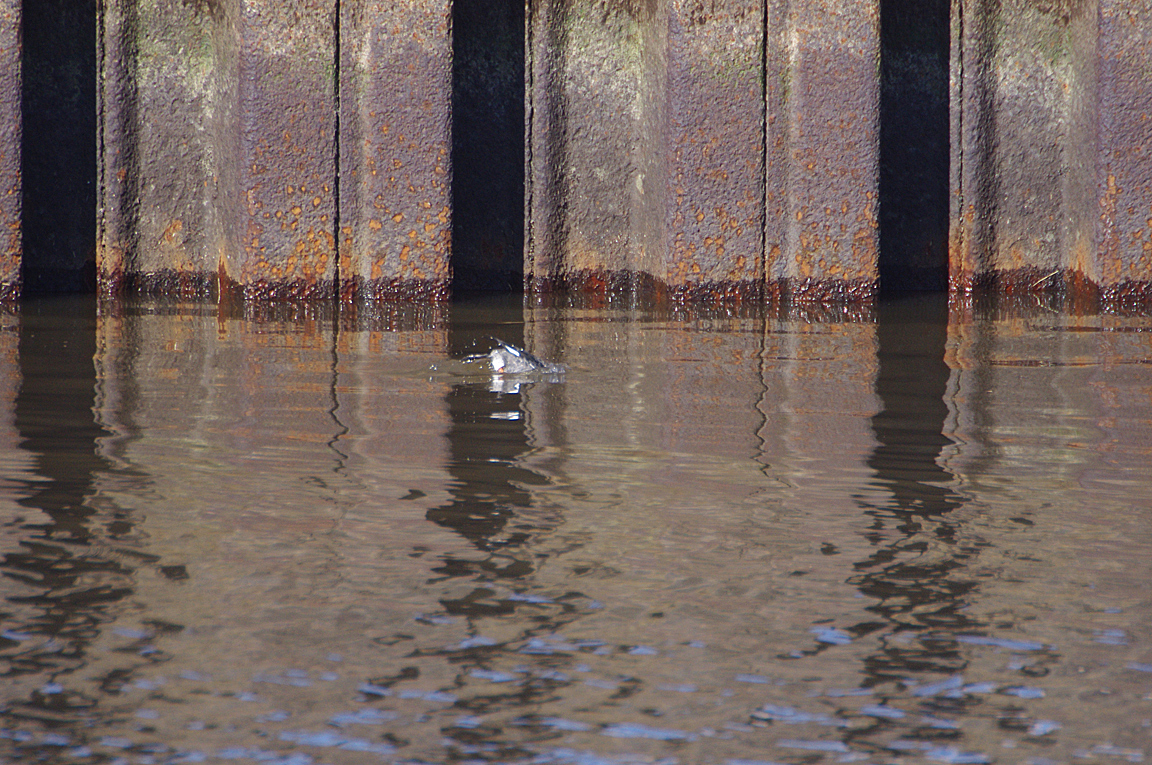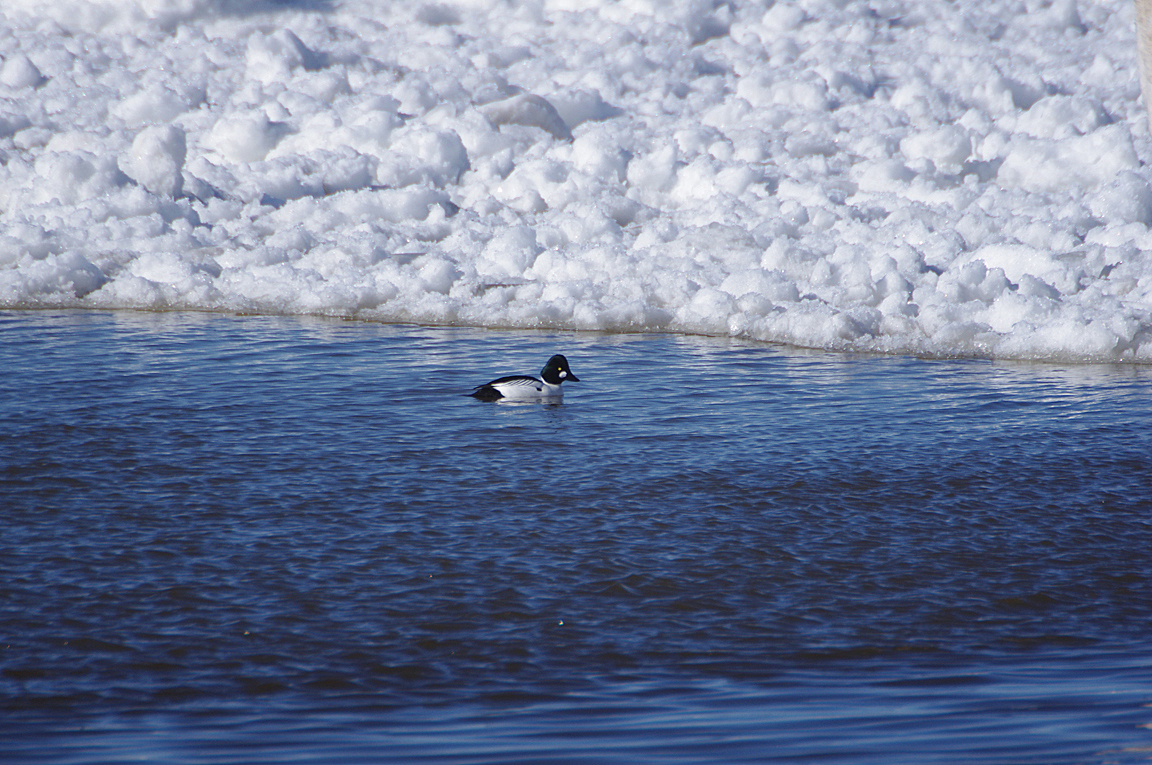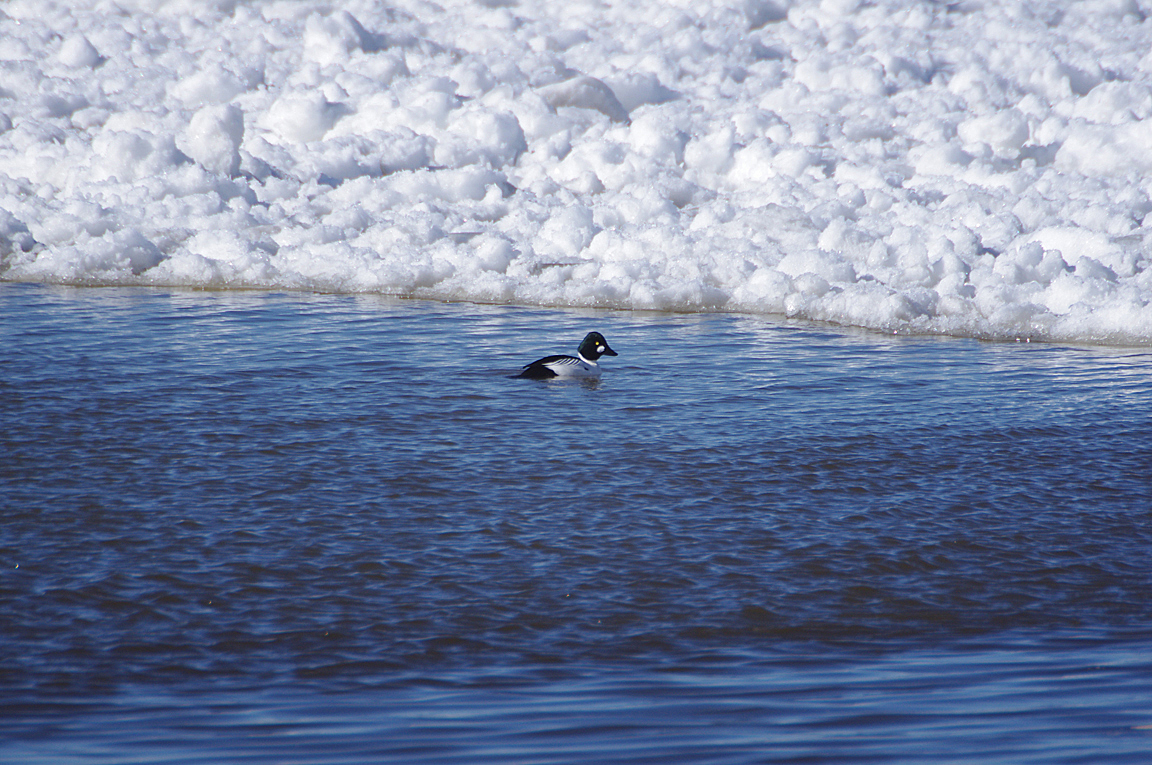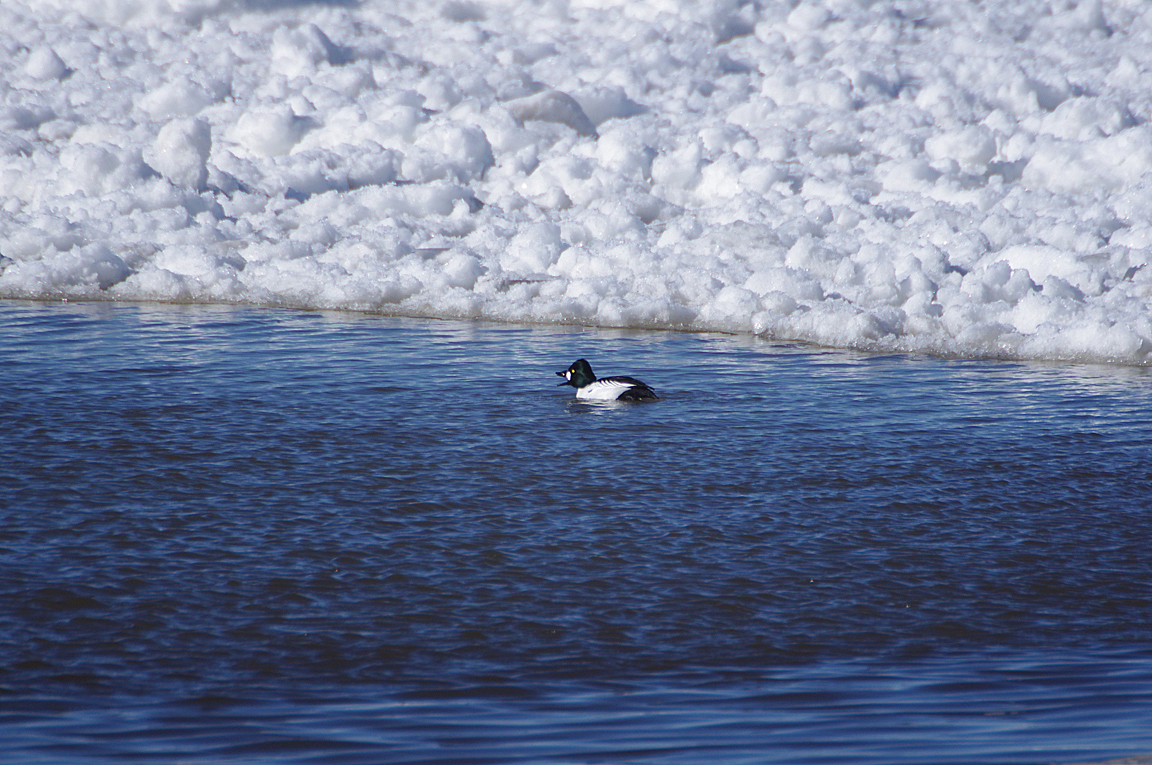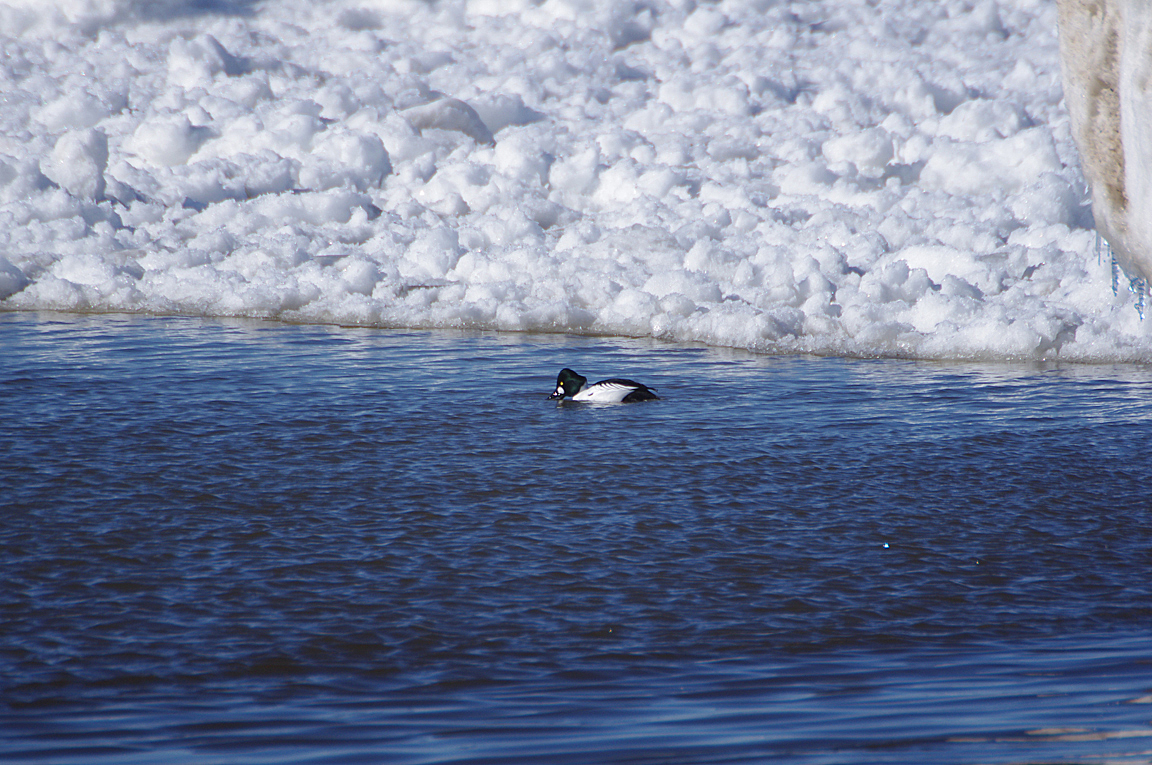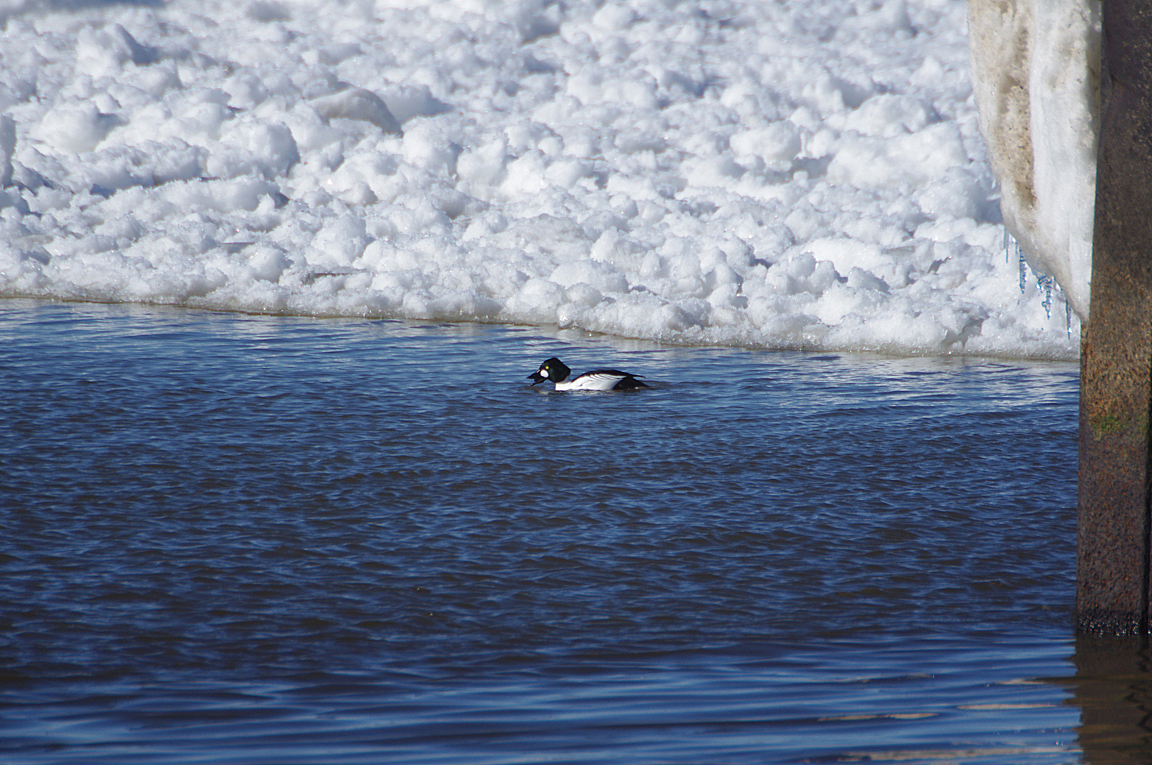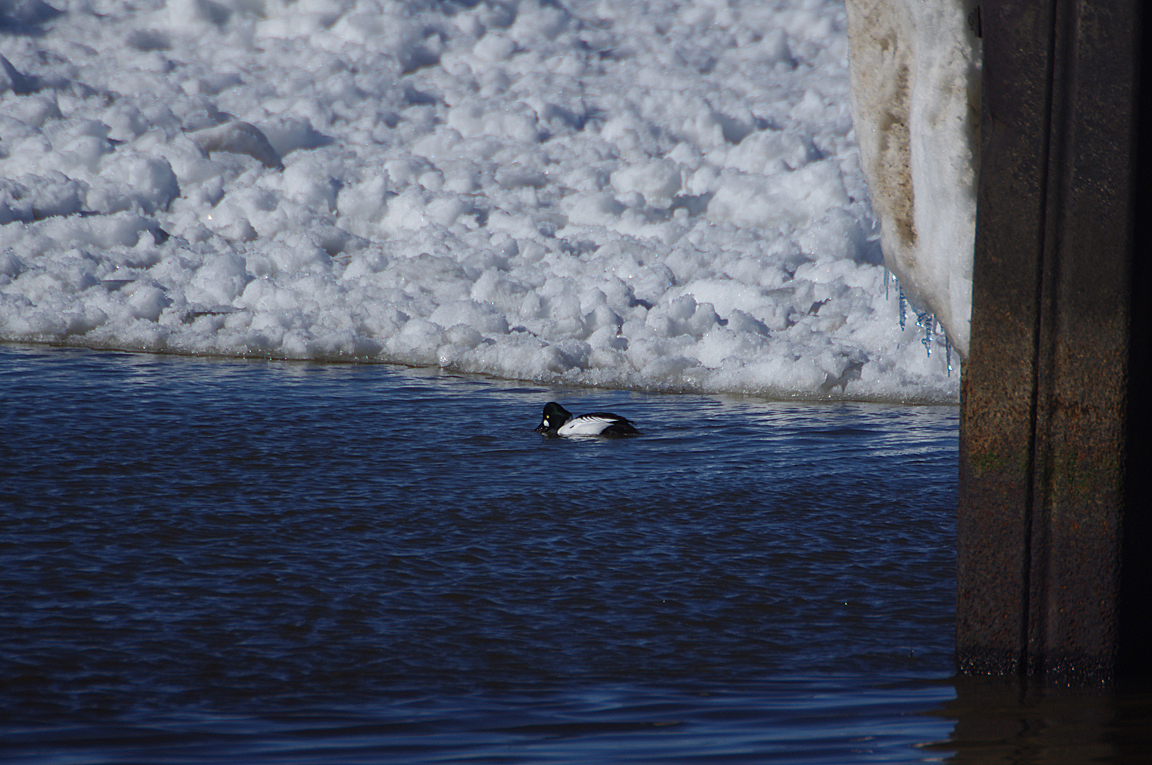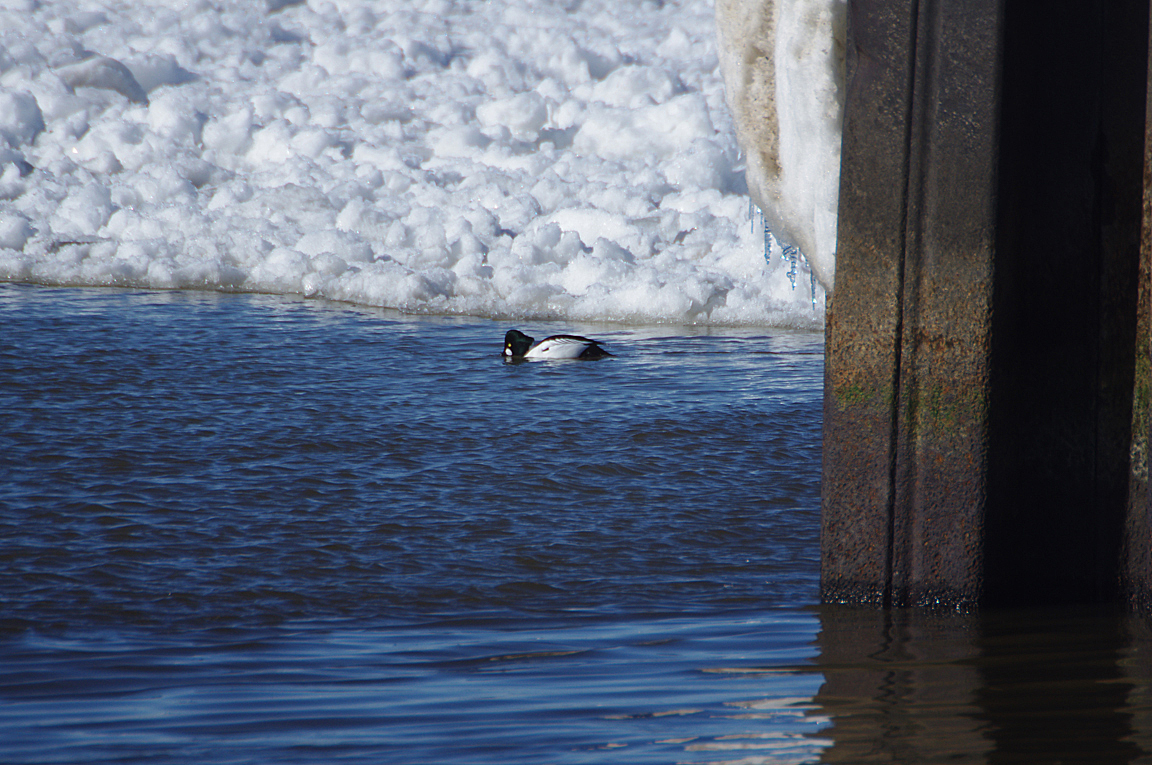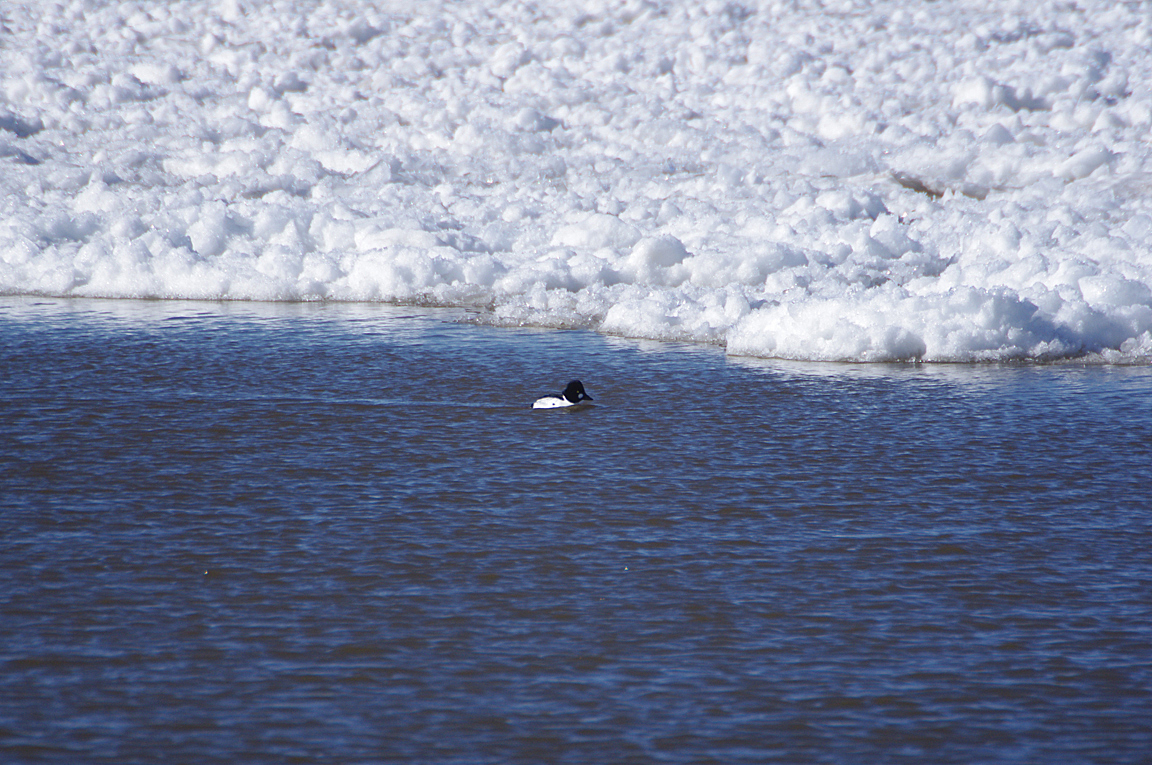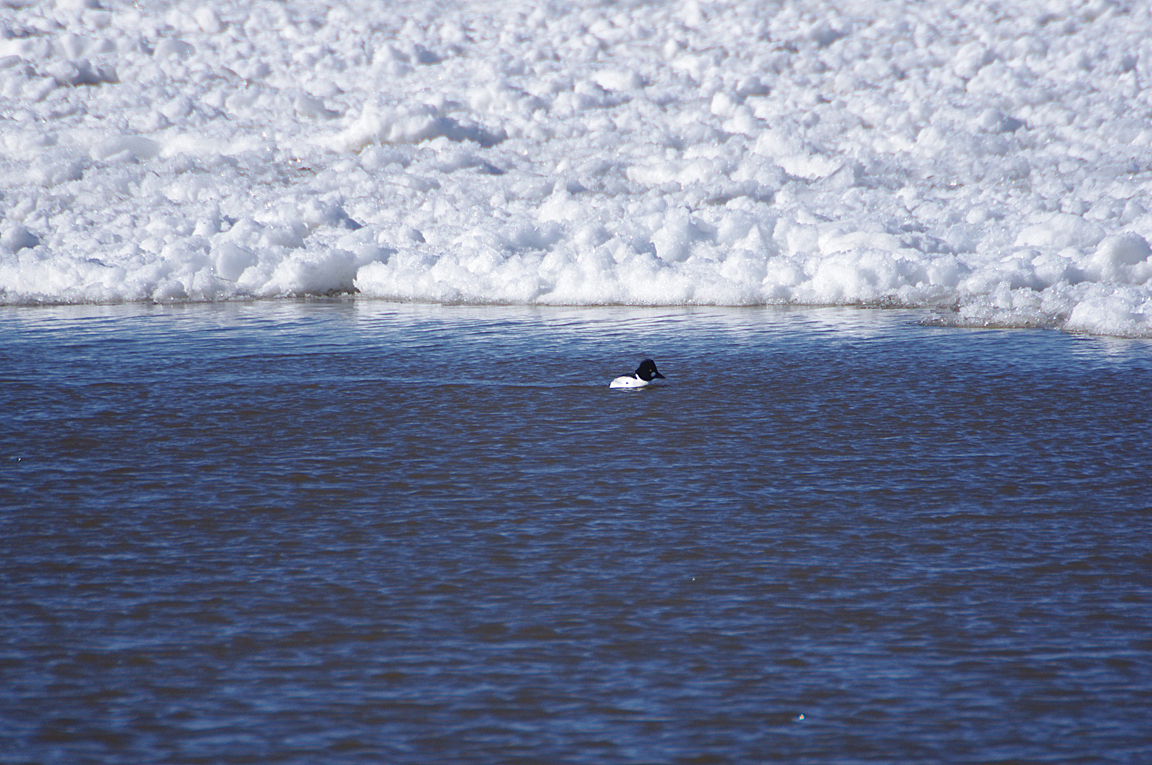|
|
|
 |
Common Goldeneye
|
| Selasphorus sasin | |
The black-and-white Common Goldeneye is one of the last ducks to migrate south in fall. It often will winter as far north as open water permits.
Interesting Information
-
A female Common Goldeneye often lays eggs in the nest of another female, especially in nest boxes. She may lay in the nests of other species of ducks as well. Common and Barrow's goldeneyes lay in each other's nests, and Wood Ducks and Hooded Mergansers often lay in the goldeneye's nest too.
-
After the ducklings leave the nest they can feed themselves and require only protection. Some females abandon their broods soon after hatching, and the young will join another female's brood. Such mixed broods, known as "creches," may also occur when a female loses some ducklings after a territorial fight with another female. Young scatter and mix when females fight, and not all of them get back to their mother when the fight ends. Some or all of the ducklings may be transferred to one brood, usually that of the territory owner.
-
The eyes of a Common Goldeneye are gray-brown at hatching. They turn purple-blue, then blue, then green-blue as they age. By five months of age they have become clear pale green-yellow. The eyes will be bright yellow in adult males and pale yellow to white in females.
Description
Adult Description
-
Medium-sized diving duck.
-
Chunky body.
-
Large head.
-
Male white with black back and head, and circular white spot on face.
-
Length Range: 41-51 cm (16-20 in)
-
Weight: 998 g (35.2 oz)
-
Size: Large (16 - 32 in)
-
Color Primary: White, Black, Sheen or Iridescence
-
Underparts: White
-
Upperparts: Black
-
Back Pattern: Barred or banded, Solid
-
Belly Pattern: Solid
-
Breast Pattern: Solid
Sex Differences
Male Description
Breeding (Alternate) Plumage
Head greenish-black. Bright oval white patch on side of face at base of bill. Sides, breast, belly, and secondaries bright white. Back, wings, and tail black. Short, triangular black bill. Eyes golden yellow.
Nonbreeding (Basic) Plumage
Like female, but with some black tinge at sides.
Female Description
Head chocolate brown. Back, wings, and tail slaty gray. Flanks, belly, and breast white. Eyes pale yellow to white. Short, triangular bill black with yellow tip of variable length.
Immature
Immature similar to female. First winter male similar to adult male, but has browner head, gray sides and chest, and smaller and less distinct white oval on face.
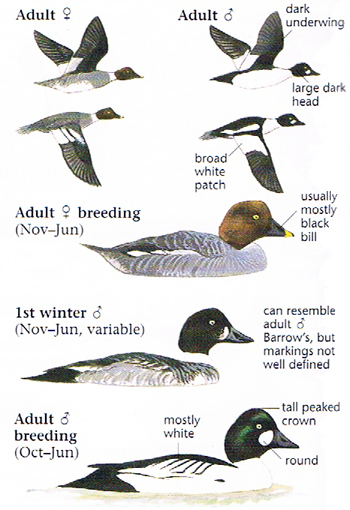
Photo taken from: The Sibley Field Guide by David Allen Sibley
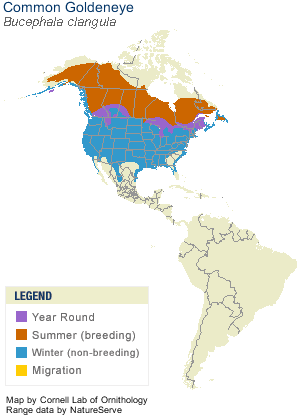
© 2003 Cornell Lab of Ornithology
|
Habitat |
|
|
Behavior |
|
Dives underwater to capture prey on bottom. Flocks often dive together. |
|
Food |
|
Aquatic invertebrates, and occasionally small fish and vegetation. |
Taxonomy
| Kingdom: | Animalia |
| Phylum: | Chordata |
| Subphylum: | Vertebrata |
| Class: | Aves |
| Order: | Anseriformes |
| Family: | Anatidae |
| Subfamily: | Anatinae |
| Genus: | Bucephala |
| Species: | Bucephala clangula |
| Subspecies: | Bucephala clangula americana |
| Bucephala clangula clangula |
Similar Species |
|
|
Bird Sound |
|
|
Silent except in courtship when male gives a faint "peent." Wings produce a loud whistling in flight. |
|
Eggs look like this |
|
Photo taken from: ARCTOS Collaborative Collection Management Solution |
